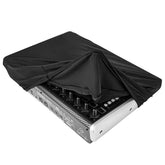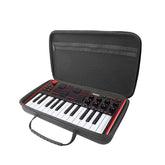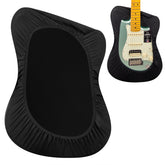Harmony in Wood: A Guide to Tonewoods in Guitar Crafting
by
linzz
15 Jan 2024
Although there are thousands of types of wood, only a few are suitable for making musical instruments. After all, instruments differ from furniture; besides being sturdy and stable, the crucial aspect in wood selection is its ability to vibrate and produce sound.
Three Elements of Wood Selection
1. Easy Vibrations:
Sound is produced by vibrations. For guitars, the vibration of the strings is transmitted through the fretboard to the soundboard, and the sound is amplified through the body's resonance. If a guitar is made from wood that is difficult to vibrate, playing it becomes as "arduous" as exercising.
2. Balanced Sound:
Imagine someone singing. Their voice might sound like an adult at one moment and like a child at another, sometimes loud and piercing, and at other times delicate. No one likes such a singing style. The guitar is similar; a balanced tone and volume make it pleasing to the ear.
3. Stable Structure:
Don't underestimate the six strings on a guitar; they exert over 70 kilograms of tension. Wood not only needs to withstand such tension but also needs to remain stable amid changes in temperature and humidity. No one wants to wake up and find their guitar turned into firewood.
Although there are hundreds of types of wood, those suitable for making acoustic instruments, known as tonewoods, are limited. Let's now take stock of common tonewoods used in guitar making.
Soundboard
— The soundboard receives and transmits the vibrations of the strings, playing a decisive role in the tone. —
1. Spruce
Spruce wood is yellowish-white, with straight grain and fine structure, relatively light and soft. It possesses a soft color, fine texture, natural patterns, and exhibits a simple, primitive beauty. Spruce wood also surprises with its excellent resonance performance.

2. Cedar
Cedar wood appears yellow with a hint of red, slightly darker than spruce. The sound from a cedar soundboard is somewhat subdued, with a mellow and rich tone that feels expansive.

3. Koa
Koa wood comes from Hawaii and is a rare material. Its beautiful flame-like patterns are frequent, making koa wood soundboard guitars luxurious, featuring bright and outstanding tones.

4. Mahogany
Mahogany heartwood is light reddish-brown, with beautiful characteristic striped patterns on the radial section. It is one of the world's most precious woods. Mahogany has moderate density, good stability, and strong toughness, making it easy to process. While mahogany soundboards are relatively rare, they occasionally appear in guitars made entirely of mahogany.

Back and Sides
— Although the back and sides don't impact the tone as much as the soundboard, they are still significant. —
1. Rosewood
Freshly cut rosewood emits a rose-like fragrance, also known as rosewood. When used as back and sides, rosewood exhibits good resonance and sustain, with full low frequencies and bright high frequencies.

2. Mahogany
Mahogany heartwood has lower density than rosewood, providing quicker feedback to vibrations. It produces a balanced, bright, and warm sound, showing openness, strong resonance in midrange tones, and powerful sound.

3. Sapele
Sapele wood appears similar to rosewood with alternating light and dark shades but lacks distinct dark wood grains. Its sound is similar to mahogany but clearer and more penetrating.

4. Koa
Like mahogany, koa can be used not only for soundboards but also for back and sides. As back and sides, koa combines the warmth of rosewood with the subtlety of mahogany.

5. Maple
Maple has a lighter color, higher density, and varied grain patterns. As back and sides, it produces a crisp, bright sound, maintaining strong and stable low frequencies.

Neck + Fretboard
— The material of the neck also has a certain impact on the tone. —
1. Mahogany + Ebony
A popular high-end combination, compared to mahogany/rosewood, this combination adds a bit more tightness, brightness, and clarity to the tone. Ebony is dense and hard, quickly transmitting sound in the instrument. It provides robust bass and clear treble. Mahogany contributes warmth and transparency to the mix. Ebony is a good match and does not fade easily with increased fretting.

2. Maple
Maple is the most common wood used for solid guitar necks. A single-piece maple neck has a tight and fitting tone with a sharp high end and stable low end. Contrary to expectations, the high end is not as bright as people might think. It is a particularly bright-toned neck choice, and the midrange transmission is quick. Playing strings forcefully will make the tone bright and sharp, but the right amount of force will reveal excellent clarity.

The above is a general classification of common tonewoods in guitar making. Each wood type can be further divided into specific subcategories. For example, spruce can be divided into Sitka spruce, Engelmann spruce, Adirondack spruce, European spruce, and so on. In addition to the commonly listed tonewood varieties, there are other rare species to choose from.
Tags:






